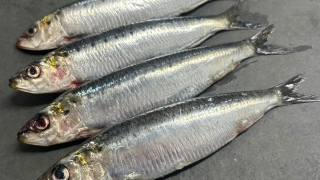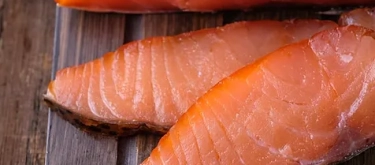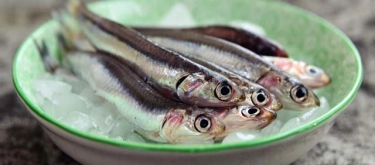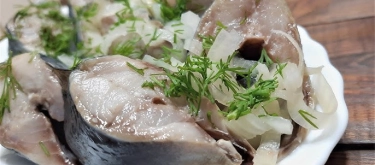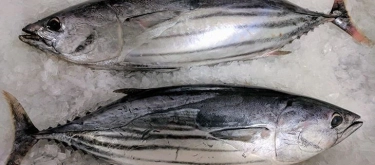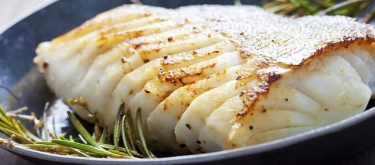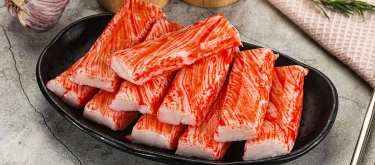Sprats: Taste Profile, Aroma, Benefits and Health Risks
Sprats, commonly known as "sprats," are small, oily fish belonging to the herring family. They are particularly popular across Northern and Eastern Europe, where they're traditionally enjoyed smoked, canned in oil, or served as snacks and appetizers. Renowned for their intense flavor, nutritional richness, and culinary convenience, sprats have earned a cherished place in culinary traditions, notably in Baltic, Eastern European, and Scandinavian cuisines.
Sprats (commonly known as "sprats" or "brislings") are fish-based products unsuitable for vegetarians, vegans, or individuals allergic to seafood. They are naturally gluten-free, but canned versions may contain additives such as gluten, spices, or preservatives. Always check labels carefully if sensitive to these ingredients.
What does Sprats taste like?
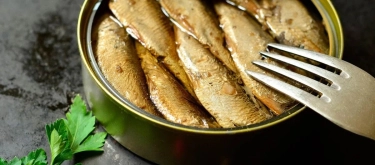
Complete Sensory Description
Taste
Sprats exhibit a pronounced savory, mildly salty, and deeply umami flavor, enhanced by subtle smokiness due to traditional smoking and preserving techniques. Their robust taste is complemented by faintly sweet, nutty undertones, harmoniously balanced with gentle marine brininess. The preserved forms, particularly smoked sprats in oil, offer more intensified flavors, featuring a pronounced salty and smoky character with delicate hints of caramelization.
Aroma
Fresh sprats possess a mild marine aroma, clean yet subtly oceanic. Preserved sprats, typically smoked, develop richly appetizing, smoky fragrances mingled with marine notes, making them especially appealing in culinary applications. Their aromas evoke traditional smoked seafood, enhanced by notes of aromatic woodsmoke, gentle caramelization, and savory depth.
Texture
Sprats have tender, soft flesh that easily flakes upon cooking. Canned or smoked sprats display a slightly firmer yet moist, smooth texture. Their bones, typically softened by the smoking and preserving process, can often be consumed without removal, providing delicate textural contrasts. When eaten whole, sprats offer a pleasing, tender, melt-in-the-mouth quality balanced by slight firmness from the preserved flesh.
Appearance
Fresh sprats have silvery bodies with delicate scales and pale flesh. Preserved sprats (smoked or canned) typically appear golden-brown or amber-colored, reflecting traditional smoking and canning processes. Their attractive appearance, presented in neat arrangements within cans or jars, enhances visual culinary appeal, especially in appetizers and gourmet presentations.
In-depth Flavor Analysis
The bold, savory, and smoky flavor profile of sprats arises primarily from their biochemical composition and traditional preservation methods. Richness and umami depth stem significantly from glutamic acid, a naturally occurring amino acid enhancing savory characteristics, particularly prominent in smoked fish. This glutamate presence accounts for their strong umami appeal, similar to other preserved seafoods.
Sprats also contain high levels of beneficial omega-3 fatty acids, contributing subtle buttery notes and slight oiliness that enrich their flavor and enhance mouthfeel. The presence of these fats, especially DHA and EPA, provides both nutritional and sensory benefits, increasing culinary satisfaction due to their ability to carry and amplify flavor molecules, thus improving sensory perception.
The smoking and curing process critically influences flavor, notably through the Maillard reaction, which forms complex aromatic compounds contributing caramelized sweetness, nutty nuances, and subtle bitterness. These processes significantly transform the mild natural fish flavor into the richly layered sensory experience characteristic of smoked sprats.
Variations in taste also depend on smoking woods (e.g., oak, alder, birch), seasoning intensity, and smoking duration, influencing final sensory profiles and culinary suitability.
Varieties and Culinary Applications
Smoked Sprats (Canned or Preserved)
- Classic Baltic and Scandinavian delicacy, typically served cold or lightly warmed, enjoyed as appetizers, sandwich toppings, or snacks paired with rye bread, onions, boiled potatoes, or sour cream-based sauces.
Fresh Sprats
- Often pan-fried, grilled, or quickly sautéed with herbs, lemon, garlic, butter, or simple spices, served hot as appetizers or main dishes in traditional seafood meals.
Marinated Sprats
- Sprats marinated in vinegar, herbs, spices, and onions provide appealing cold appetizers, suitable for traditional European dishes or festive culinary presentations.
Culinary Applications
- Popularly incorporated into salads, sandwiches, spreads, appetizers, and traditional dishes (e.g., Baltic or Scandinavian open-faced sandwiches, Russian salads, or simple snacks accompanied by rye bread, boiled eggs, or vegetables).
Selection and Storage
Selecting Quality Sprats
- Choose canned or smoked sprats from reputable producers; products should appear evenly colored, intact, moist, firm, and with pleasant smoky aroma.
- Fresh sprats should have clear eyes, shiny skin, firm flesh, and mild oceanic aroma without fishiness or off-odors.
Storage Recommendations
- Store canned or smoked sprats in a cool, dry place; refrigerate after opening and consume within 2–3 days.
- Refrigerate fresh sprats below 4°C (39°F), consuming ideally within 1–2 days, or freeze immediately for longer preservation (up to 2–3 months).
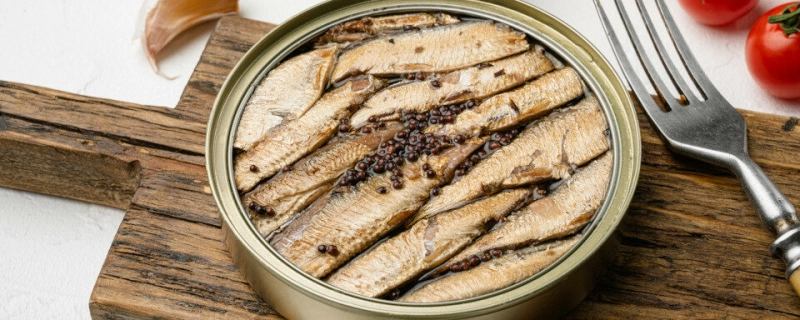
Nutritional Insights
-
Rich in Omega-3 Fatty Acids:
High omega-3 content beneficial for cardiovascular health, cognitive function, inflammation reduction, and overall wellness. -
Excellent Protein Source:
Provides high-quality protein supporting muscle growth, repair, and bodily function. -
Vitamins and Minerals:
Contains significant amounts of vitamin D, vitamin B12, selenium, iodine, calcium (particularly when consumed whole), phosphorus, magnesium, and zinc—nutrients crucial for metabolism, immune health, bone strength, and neurological functions. -
Calorie-Dense Due to Oil Content:
While nutritious, sprats' caloric density due to natural oiliness demands mindful consumption within balanced dietary patterns.
Expert Insights & Culinary Tips
-
Serving Recommendations:
Serve smoked or canned sprats chilled or slightly warmed to preserve optimal flavors and appealing textures. -
Flavor Pairings:
Sprats pair exceptionally well with onions, lemon, dill, parsley, sour cream, mustard, dark bread, potatoes, cucumber, pickles, and robust flavors like garlic or horseradish, enhancing complexity and enjoyment. -
Balancing Saltiness:
Serve sprats with acidic (lemon, vinegar-based sauces) or creamy (sour cream, mayonnaise) ingredients to balance robust salty and umami notes effectively.
Interesting and Curious Facts
- Sprats, traditionally smoked over alder or oak wood, are culturally significant delicacies in the Baltic region, notably Latvia, Estonia, Lithuania, and Scandinavia.
- Historically, sprats were vital preserved seafood staples, providing essential nutrition through harsh winters and challenging climates.
- "Riga sprats," internationally renowned Latvian delicacy, have gained global culinary recognition, reflecting centuries-old smoking and preserving expertise.
Harm and Dietary Considerations
-
High Sodium Content:
High salt content in canned or smoked sprats requires moderate consumption for individuals managing blood pressure or sodium-sensitive diets. -
Mercury and Contaminants:
Small size of sprats ensures low mercury levels, safer compared to larger fish species; sourcing from reputable, clean environments minimizes contamination risks.
Religious Dietary Considerations
Sprats are widely permissible in major religions:
- Islam: Halal and permissible in Islamic dietary practices.
- Judaism: Generally kosher, acceptable under Jewish dietary guidelines.
- Hinduism & Buddhism: Often permissible, depending on individual dietary preferences or local interpretations.
- No known widespread religious dietary restrictions specifically apply to sprats.
Final Thoughts & Sensory Journey
Sprats offer a distinctive culinary experience defined by rich savory flavors, deep smokiness, and satisfying texture. Enjoyed traditionally smoked or marinated, they provide nutritional excellence, flavorful versatility, and cultural significance, ensuring their enduring culinary popularity.
Resources
- McGee, H. (2004). On Food and Cooking: The Science and Lore of the Kitchen. Scribner.
- USDA FoodData Central (2023). Smoked and Canned Fish Nutritional Composition.
- Food and Agriculture Organization (FAO). (2021). Smoked Fish: Culinary Traditions and Nutritional Insights.


